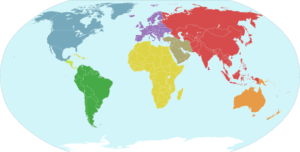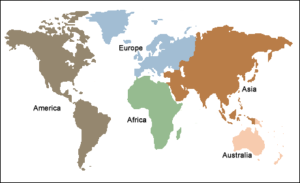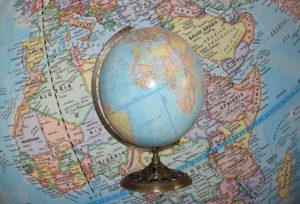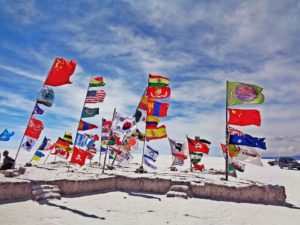Land happens to be the solid part of the earth’s surface that isn’t permanently covered by water. About 71% of this surface is covered by water and 29 % is ‘land’. Since ancient times, the world has been separated into these parts. It is being said that the now separated parts of the land were together earlier as united mass, but due to the movement of tectonic plates, pieces of earth’s crust kept moving away from each other.
It was late in the nineteenth century that the parts of the earth were explicitly defined as Continents. Today, we have enough information about continents and we decided, why not share some of the basic details with you as well? Maybe if we’ve missed something, leave a comments right at the bottom and we’ll be happy to add it in.
What are Continents?
Technically speaking, ‘Continents’ are defined as very large landmass identified by the convention. The word continent comes from the Latin word terra continēns which literally means ‘connected land‘. There are different definitions for continents and because of this loose definition, there are models ranging from 4 to 7 continents. We however, stick with seven, which are colour-coded below:
How many continents are there?
There are different models which defines how may continents are there is the world. The widely accepted model states that there are 7 continents in the world, and we go by that model as well. Here are the names of seven continents of the world:
- Africa
- Asia
- Europe
- Australia (or Oceania)
- Antarctica
- North America
- South America
One of the known models is the 6 Continents model with two variations. In the first variation, all the continents remain the same while North America and South America are considered as one continent named America. The second variation of this model keeps all continents the same while merging Europe and Asia into one, naming it Eurasia.
When you start to club these continents together, the smaller continent models are formed. Keeping both the variations of the ‘6-Continent Model’, then you can form a 5 Continent model as well, which can be named as below:
- Africa
- Eurasia
- America
- Australia (or Oceania)
- Antarctica
There is also another variation to this 5 Continent model adopted by Olympic Charter which excludes Antarctica as it is uninhabited and the name of the continents for these variations are: Africa, Europe, Asia, America and Australia (or Oceania). The 5 Continent model is also a popularly adopted model by many education institutes.
By the meaning of continents ideally defined as large land masses naturally separated by water (oceans/seas), we can also have a 4 continent model and their names as follow:
- Afro-Eurasia (or Eurafrasia)
- America
- Australia
- Antarctica
All the models are correct based on the theory of formation of these models but the most accepted model is that which suggests seven continents in the world. To some extent, the five continent model of the world with either of the one variations also makes decent sense. What’s your opinion? Which do you follow? Leave a comment below and let us know.
Fun Facts about continents
- The distribution of countries are uneven among the continents – some have more countries and some have few.
- Names of all continents (5-continent model) start and end with the same letter.
- It was believed that all continents were connected as one large landmass called Pangaea.
- North America is the continent that completely lies in the northern and western hemisphere.
FAQs About Continents
Q) Which is the largest continent in the world?
A: Asia, with biggest landmass and world’s largest population residing in the Asian continent.
Q) Which is the smallest continent in the world?
A: Australia (or Oceania).
Q) Which continent has most countries?
A: Africa – 54 countries
Q) Which is the wealthiest continent in the world?
A: According to the GDP report for continents 2016, North America is the wealthiest continent, but by the number of billionaires, Asia ranks first – 719 billionaires.
Q) Which is the least populated continent?
A: Antarctica as there is no human settlement except scientists working at research stations.
Our Travel Scoops section attempts to take you for a ride around the world while sitting at home, so stay connected and keep following ReadScoops.com.








